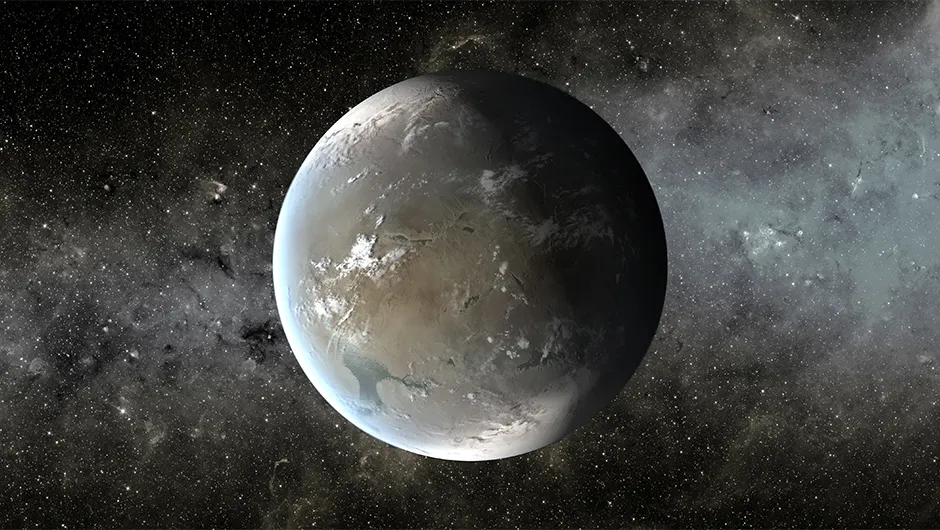A study of the spin dynamics of two 'nearby' exoplanets suggests they are more Earth-like than expected.
Kepler-186f is an Earth-sized exoplanet 500 lightyears away that orbits its star in the so-called ‘habitable zone’.
The ‘habitable zone’ is the region around a star in which an orbiting planet is likely to support liquid water on its surface: a key condition for life as we know it.
A team of researchers from the Georgia Institute of Technology used computer simulations to work out Kepler-186f’s spin axis.
A planet’s axis of spin and its tilt contribute to its climate and seasons.
The study suggests Kepler-186f’s axial tilt is very stable like Earth’s, meaning it probably has regular seasons and a stable climate

The team believe the same could be true for Kepler-62f, a super-Earth exoplanet orbiting a star 1,200 lightyears away.
“Mars is in the habitable zone in our Solar System, but its axial tilt has been very unstable, varying from zero to 60 degrees,” says Georgia Tech Assistant Professor Gongjie Li, who led the study with Yutong Shan from the Harvard-Smithsonian Center for Astrophysics.
“That instability probably contributed to the decay of the Martian atmosphere and the evaporation of surface water.”
A planet’s angle of orbit can be influenced by gravitational interactions with nearby planets.
Earth has a large enough Moon to help stabilise its axial tilt, but Mars does not.
“It appears that both exoplanets are very different from Mars and Earth because they have a weaker connection with their sibling planets,” says Li.
“We don’t know whether they possess moons, but our calculations show that even without satellites, the spin axes of Kepler-186f and 62f would have remained constant over tens of millions of years.”
